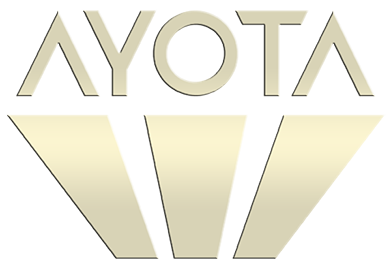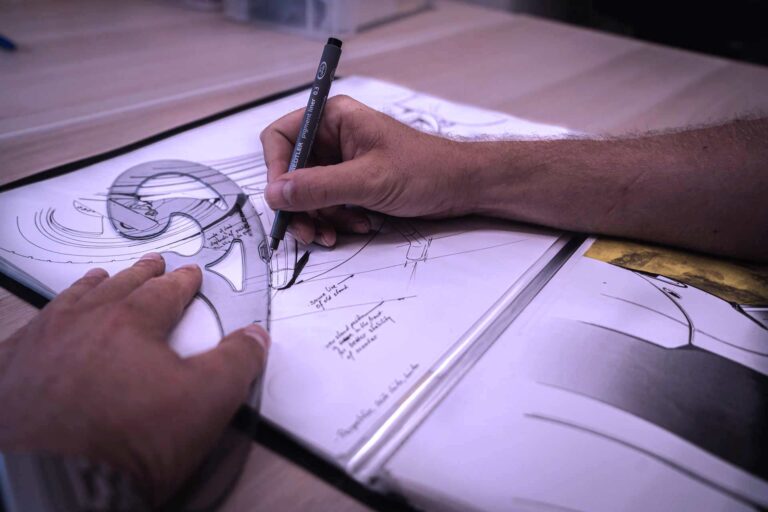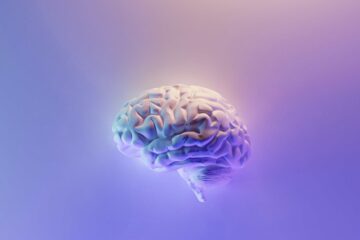The area of tension for the development process and the market maturity of a product, a service or the user experience is a cross-sectional matter of the different approaches of product design, user experience and design thinking.
You can learn more about design thinking in the upcoming post.
Product design
Definition, Origins and Process
Product design is a process that turns an idea into a successful product. It caters to both consumer and business goals. This means that the needs of the users as well as the available budget must be taken into account in the product design. For this reason, the process involves close cooperation between people from your own company and from the target market.

What is product design?
Product design describes the process of product development until the goods are ready for the end user.
This includes:
- The Idea how the product should look like
- Conceiving drafts
- Testing the product
- Iterate to fix any deficiencies
- Refine until a finished product emerges
Product designers thus apply a mix of research, strategy, industry knowledge and creative thinking. The success of the product depends on how well it meets users‘ needs. The profitability for the company is affected by the business constraints such as the budget available and the time required for development.
To fully understand the product design processes, it is helpful to first define what is meant by a product.

What is a product?
Products can be physical things found in a store, as well as intangible things. The product is the end result of a product designer’s work and thus what is offered to customers in the delivery phase of the product design process.
The following table lists examples of both product types:
Physical products
- Intangible products
- vehicles software
- furniture
Services
- car wash or manicure
- clothing
Information
- a training course or a workshop
The origins of product design
The product design has its roots in the related but long established industrial design. This arose when physical objects were first mass produced. While in the pre industrial era every craftsman could design and refine his own products, the centralization and standardization of production required a specific designer role. Industrial designers were responsible for defining the properties and functions of the mass-produced items and ensuring that they were suitable for the relevant markets.
Industrial design thus includes the following aspects:
- Set functions
- Ensure an item’s usefulness
- Ensure good functioning
- Design aesthetic and design properties
The product design evolved from the industrial design as part of an extended commission. The goal was a process that is not only designed for purely physical products, but can be applied to a broader category of products.
Product vs. UX (User Experience) design.

Differences and Similarities
Product design is closely related to user experience design. Both disciplines deal with designing a solution around an end user. This way of working known as design thinking which, as promised, will be dealt with in detail in the coming posting. Therefore, there is also an overlap between the roles of the product designer and the UX designer. They both require a high level of user empathy and try to understand who the users are and where they are coming from.
But there are also differences
A UX designer is solely concerned with the user experience, thus with the interaction of the user with the design. In this context, there is also talk of product experience. This is about ensuring that a user’s experience runs smoothly, no matter if it’s a piece of sofware like an app, a hardware like a smartphone or a physical item like a timepiece.
The product designer role encompasses a broader range of responsibilities. He is responsible for designing the functions of the product flawlessly while keeping the aesthetics in mind. This also means that he includes the orientation of the corporate brand in the product design and, if necessary, observes what competitors are doing in the market.

What does a typical process look like in product design?
Product design today is less of an end-to-end process and more of a continuous product life cycle. Because companies must constantly review and refine their products to ensure they continue to meet the demands of a changing customer base.
The steps in product development vary for each company – depending on what type of product they are developing. Nevertheless, these six general steps for product design can be determined:
- Research
The first phase of product design is to fully understand the end users and the business goals. It is necessary to create a design briefing.
This includes
- the problem the product is intended to solve or the need it is intended to fill.
- the context in which the problem or need occurs.
- the requirements that the product must meet in order to represent an effective solution.
For this it is necessary to be able to empathize with the users. Understanding consumers is the foundation of successful product design.
There are various means that help to uncover the wants and needs of the users
- Survey
- Interviews
- Diary studies
- Secondary Market Research
Also, the first step is to thoroughly understand the business needs and goals for the product. This includes e.g. B. Consideration of the price of the item considering the ROI.
Tip: At this stage of product design, it’s important not to rush things. Qualitative and detailed research right at the beginning has a great influence on the later results.

- 2. Generate Ideas
The brainstorming phase is all about creative thinking
Product designers develop as many potential solutions as possible through various methods such as brainstorming. It’s a good idea to include all ideas in the list of options without judgment or bias. However, it’s not just about developing every conceivable idea. The brainstorming in the product design is based on the findings from the research phase. These steer the process and limit the possible solutions.
- 3. Refine
Validation After brainstorming
It is important to refine the options and create suitable product concepts. These should be thoroughly checked against the user profile to ensure they are viable for further development. At the same time, they must meet business requirements. These include considerations to the aesthetics of the design.
- Does it for example match the brand identity?
- How are possible overlaps or integrations with existing product lines?
- How is the feasibility of the ideas within a set budget?
At this stage of product design, it is also time to expand the circle beyond the current team and include stakeholders from other areas of the company. They evaluate the concepts based on their specific expertise. Concept testing is also a key component of the refinement and validation phase. A concept testing tool can help gather feedback on various aspects of the idea, from features to product name to how it is going to be presented to users.
Max-diff and conjoint analyzes are particularly suitable for defining the right mix of features for the product concept.

- 4. Prototyping & Testing
The ideas that make it to the next phase of product design are now processed into a prototype and tested further. When concepts are turned into reality, many new considerations and challenges sometimes arise. As a result, significant adjustments are often necessary here. If it is a physical product tests with attributes that cannot yet be checked in the concept phase, such as the texture or the weight of the item can now be further investigated. Therefore, extensive product feedback is worthwhile here again. Even at this point in the product design, an idea can still prove to be unsustainable. This is normal – you still have the opportunity to include any of the other concepts you developed in the previous phase.
- Iterate
Each prototype test leads to new insights that help to improve the product. In the iteration phases between each test, product designers make the optimizations. How many iterations they go through and how fast the whole process runs depends on several parameters
- size of the team
- scope of testing
- type of tests
- budget available
In the best case, at the end of this product design phase, a finished product is created without defects and potential for improvement.
- Deliver
Once the product has reached a viable state, it is ready for the market. However, this does not mean that research, testing and iterations from product design have come to an end. These processes continue to run in the background. This is the only way to maintain the quality and performance of the product over a long period of time.



